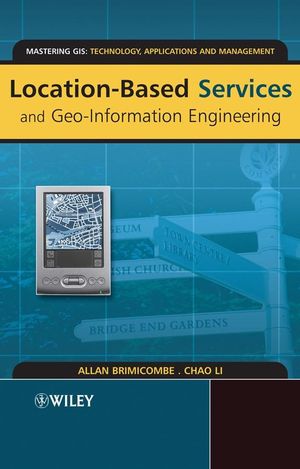5G Location-Based Services Training, 5G Geo-Information Engineering
5G Location-Based Services Training, 5G Geo-Information Engineering
5G Location-Based Services Training is a 2-day training cover 5G Location-Based Services (LBS) and 5G Geo-Information Engineering topics.
5G Location-Based Services (LBS) are the delivery of data and information services where the content of those services is tailored to the current location and context of a 5G mobile user, an IoT device or an autonomous vehicle.
Participants will learn about technologies for 5G mobile and cellular network localization. In principle, any signal propagating in a 5G wireless environment intrinsically conveys position-dependent information that can be exploited for localization. Participants will also learn about Geo-Information (GI) Engineering and 5G engineered solutions to use of geographical information and underpins applications such as LBS.
Such a position-dependent information can be extracted from measurements of signal metrics such as received signal strength (RSS), time-of-arrival (TOA), angle-of-arrival (AOA), phase, or combinations of them, depending on the radio technology. One or multiple receivers compute signal measurements with respect to one or multiple reference transmitters, and then infer the position by means of a localization algorithm.
Who Should Attend
This course is designed for engineers, software design engineers, analysts, managers, and employees with little or no 5G Location-Based Services or 5G Geo-Information Engineering topics experience. The course is also useful for those who have experience with 5G LBS and Geo-Information Engineering but have never had any formal training.
What You Will Learn
- An overview of mobile and cellular Location-Based Services (LBS) standards by 3GPP
- A summary of 5G LBS tools, applications and methods
- How to implement 5G LBS and 5G Geo-Information Engineering
- An overview of 5G LBS-capable systems
- How to design a 5G LBS and 5G engineer Geo-Information application and installation
Course Agenda/Outline
Overview of Location-Based Services (LBS)
- Concepts behind Geographical Information Systems (GIS)
- GIS and Geo-Information Engineering
- GNSS (Global Navigation Satellite System)
- GNSS Satellites
- LTE and 5G Location-Based Services
5G LBS Architecture
- 5G LBS Application
- 5G LBS Methods
- Locating the 5G Subscribers
- Positioning Technologies
- Global Positioning System
- Network-Based Positioning Technologies
- Short Range Positioning Technologies
- Hybrid Positioning Approaches
- Modes of Communication in LBS
- 3GPP Standardization
- Legal Issues
The Positioning Methods
- Mobile-based:
- Calculations and Signal Measurements
- Terrestrial or/and Satellite Transmitters
- Network-based Positioning
- Location Servers
- Signal Measurements
- Classical Methods
- A-GNSS (Assisted GNSS)
- Trilateration
- Time of arrival (ToA)
- Time Difference of Arrival (TDoA)
- Direction or Angle of Arrival (DoA or AoA)
- Fingerprinting
- Received Signal Strength (RSS)
- Proximity
- Cell-ID method
- ECID (Enhanced Cell ID)
- OTDOA (Observed Time Difference of Arrival)
- Uplink time difference of arrival (UL-TDOA)
- Other Positioning Methods Based on Power Measurements
5G and Need for Location Based Services
- 5G technology Positioning and Location Requirements
- Key Usage Scenarios
- eMBB, uRLLC, and mMTC
- eMBB (enhanced Mobile Broadband) and higher frequencies
- mmWaves
- URLLC (Ultra Reliable Low Latency Communications) New Opportunities such as Autonomous Vehicle and Vehicle-to-Everything (V2X) Applications
- mMTC (massive Machine Type Communications) and Developments of IoT Applications
- Low Power Wide Area (LPWA) Communications
- TDOA Measurements at BSs, eNodeB and gNB
- Single-anchor Positioning with Massive mmWave Antenna Arrays
- Localization Characteristics of the Uplink and Downlink Signals of 5G New Radio (NR) GNSS (e.g. BeiDou, Galileo, GLONASS, and GPS)
- Terrestrial Beacon Systems (TBS)
- 5G D2D Architecture
- Proximity-based Services (ProSe)
Non-3GPP Technologies for 5G Localization
- Service Coverage of GNSSs in Indoor Environments
- Indoor Localization Solutions in the last two decades
- Acoustic, Infrared, Laser, Inertial, and Vision Technologies
- Measurements of Specific Features of Radio Signals (e.g., TOA, RSSI, etc.)
- Long-range IoT Applications
- Smart City, Asset Tracking, Smart Metering, Smart Farming, and Smart Logistics
- LoRa and Sigfox
- Bluetooth, WLAN, RFID, and Sensors
- Wi-Fi CERTIFIED Location™
Analyzing 5G Positioning and Use Cases
- Mobile Broadband (MBB)
- 5G indoor Positioning
- Vehicular to Everything (V2X)
- 5G Drone Localization
- 3GPP Evolution to 5G Positioning
- 5G new radio (NR)
- Key Features of 5G NR Positioning
- 5G NR Enhanced Parameters for Positioning Accuracy Estimation
- Angle of arrival (AOA) Measurements with NR
- 5G Architecture Supporting Positioning
- SBA and Location Management Function (LMF)
- Role of Mobility Management Function (AMF)
- NR Positioning Protocol A (NRPPa)
- LTE positioning protocol (LPP) via AMF
- Positioning Reference Signal (NR PRS)
- Sounding Reference Signal (SRS) for Positioning in the Uplink
- The downlink Positioning Reference Signal (PRS)
- gNBs and Transmit Resource Pairs (TRPs)
- Beamforming, Multi-antenna in 5G Positioning
- Beamforming and signal to noise ratio (SNR)
- 5G Round trip time (RTT) and Angle-based Positioning
- Angle of Departure (AOD) based on the beam ID accessed by the UE
Course Material
- Tonex Course Material
- 3GPP References
- Course Book by Wiley

